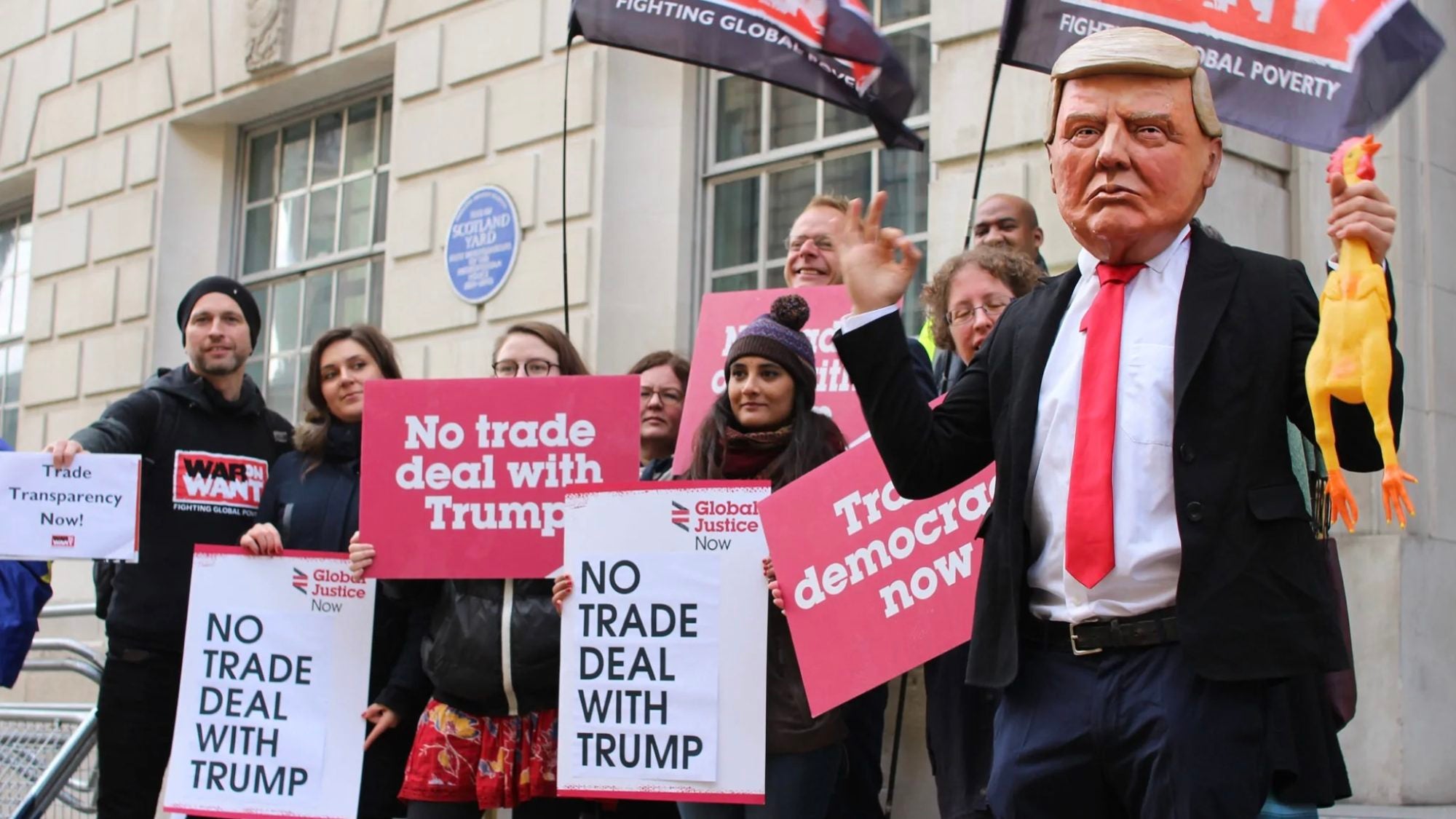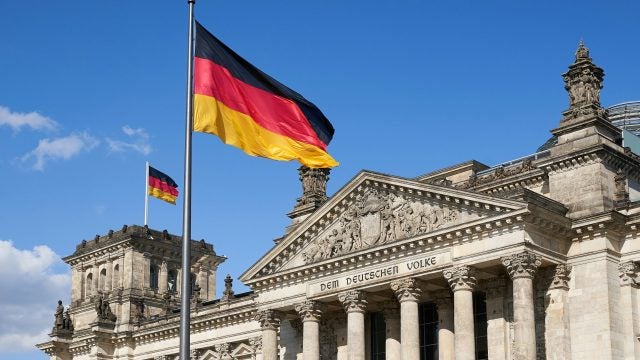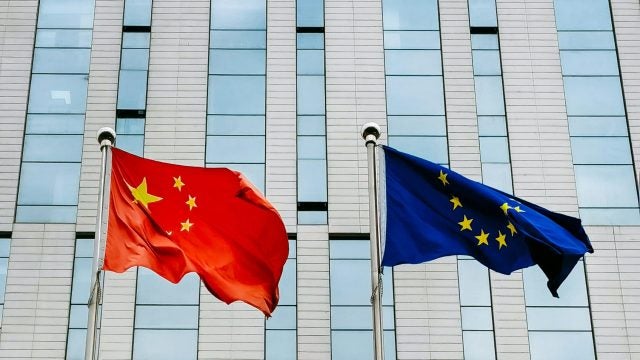
Title: Trading the Global Future Part II: Bad Policies
In addition to bad timing, the Trump tariff wars suffer from bad policies, which have been fueled by the eclipse of U.S. free trade legacy with the Americas, Europe, and Asia. These misguided policies have great potential to harm multinational companies operating in China.
Despite taking many by surprise, Donald Trump’s 2016 triumph was due in part to the way his message “America First” resonated with the electorate. Trump did not create the trend toward protectionism in trade and isolationism in international affairs. He did, however, expand it beyond its prior manifestations in the postwar era.
Since the end of the Cold War, the gap has widened between those Americans who believe that America’s should not overstretch itself in the world and those, including neoconservative Republicans and liberal internationalists,who believe in American exceptionalism. Even in the postwar era, when the U.S. accounted for more than a third of the global economy and dominated trade, most Americans believed that America should be engaged internationally and cooperate with other countries. As time went by, the U.S. share in the world economy shrank and trade surpluses turned into trade deficits, internationalism still remained central to the American agenda. But after the end of the Cold War and the excesses of the War on Terror, an increasing number of Americans have come to believe that the U.S. should focus on minding its own business internationally and get its own house in order.[1] Ironically, the “America First” doctrine implies that, by building trade, investment, and migration walls, America is practicing more effective international engagement.
From Multilateral Free Trade to ‘America First’ Terms
The Trump administration’s hawkish trade stance represents unilateral disruption in international trade. The decline of America’s free-trade legacy both reflects and contributes to hawkish stances, as evidenced by the fact that all major US free trade deals in North America, Europe, Americas, and Asia Pacific have fallen under fire in recent years. What makes the Trump administration different is that it has little willingness to restore old, multilateral free-trade policies. Instead, it seeks to renegotiate all major extant free trade agreements (FTAs). The goal of such talks is not to achieve multilateral compromise on the basis of global economic interdependence. Rather, the strategic objective is either to redefine the terms on the basis of U.S. economic leverage and unipolar geopolitics or – if that is not acceptable to other parties – to withdraw the U.S. from such FTAs. In such efforts, the revised NAFTA deal is likely to serve as something of a blueprint.
From North American NAFTA to U.S. NAFTA
In the past year,Canada and Mexico have been hedging their bets against a potential NAFTA collapse by pushing for deals with new partners, particularly with China and other Asian countries. NAFTA’s record has proven mixed since its inception in 1994. While the agreement has broadly benefited consumers, critics complain that it has contributed to investment outflows, unemployment, and offshoring. Nevertheless, most Americans support NAFTA, as does the majority of Canadians. However, NAFTA has not boosted consumer welfare significantly in Mexico, where per capita incomes have been lagging behind those in the U.S. and Canada.[2]
Andrés Manuel López Obrador won an impressive victory in Mexico’s July presidential election. While Obrador has long been a critic of NAFTA, his center-left election platform was more moderate. Unlike the incumbent President Enrique Peña Nieto, he would not see the failure of the NAFTA renegotiation as fatal for Mexicans.[3]In the U.S., the ongoing tariff wars and increasing friction with U.S. trade partners in the Americas, Europe, and Asia has added to uncertainty in the mid-term elections. In Canada, conservatives have mocked Justin Trudeau’s government, posturing for the 2019 elections. Nevertheless, liberals have been rising in recent polls as Canadians rally behind Trudeau against Trump tariffs.
As three-way talks with Canada and Mexico fell apart in June, the U.S. has been conducting one-on-one talks with Mexico, ignoring Canada. President Trump announced a separate bilateral trade deal with Mexico, after the U.S. dropped its “sunset clause”;a trade mechanism to force a renegotiation of NAFTA every five years if the new terms failed to foster “more balanced trade” between the three member countries. However, the devil is in the details. On the Mexican side, the deal was reached by the center-right President Enrique Peña Nieto, whose approval ratings have plummeted and who will be replaced by Obrador when he takes office in December, right after U.S. mid-term elections. To Obrador, the key issue was “energy sovereignty.” In the election, Obrador opposed a constitutional change pushed through by President Nieto that would have opened production and exploration in the energy sector to private capital.
Relying on his imperial rule-and-divide strategy, Trump wanted U.S. Trade Representative Robert Lighthizer to force an agreement, even a diluted one, with Mexico, so that Canada’s Trudeau – who is facing a contested election next year – would have to sign the final “America-First-NAFTA” deal. Nevertheless, if and when the final treaty is signed, it will not be the one that Trump wanted. Due to general distrust of the Nieto government, Obrador is likely to monitor with great care both the fine print and the execution of the treaty. While Trudeau does need a deal, he is trapped between an unwillingness to settle for a “bad NAFTA” and an inability to reject a revised NAFTA treaty if both the U.S. and Mexico agree on final terms.
The Demise of South American FTAA
In the 1990s, Washington’s trade bureaucrats tried to extend NAFTA to the proposed Free Trade Agreement of the Americas (FTAA). Seeking non-trade-related concessions through the FTAA, Washington struggled to expand its NAFTA blueprint across Latin America.
The region’s leaders, including then presidents of Brazil, Luiz Inácio Lula da Silva, and Argentina, Néstor Kirchner, did not oppose the FTAA. However, they demanded that the pact eliminate U.S. agriculture subsidies, provide effective access to foreign (read: U.S.) markets, and consider their member states’ needs. That was not in the interest of the Clinton administration, however.
So instead of opening South America to free trade, the FTAA split the region into two blocs. Following the impeachment of President Dilma Rousseff and the imprisonment of former President Lula in Brazil, which can also be understood as a soft coup,[4]increasingly violent economic polarization, and Lula’s resilient majority support in Brazil’s impending October general election, U.S. trade initiatives are not exactly a priority for the Latin American agenda.
Thanks to the White House’s controversial immigration policies and protectionism, Mexican views of President Trump turned sharply negative in spring 2017. More than nine of ten Mexicans have no confidence in Trump to do the right thing regarding world affairs. Similar antipathies prevail in Chile, Colombia, Peru, Argentina, and Colombia. Even greater majorities in Latin America oppose U.S. withdrawal from major international tradeand climate change agreements and the proposed U.S.-Mexico border wall.
The Quest for Indo-Pacific TPP
President Obama’s Trans-Pacific Partnership (TPP) was fueled by U.S. geopolitical interests in Asia and the Americas. The TPP originated from a 2005 free trade deal between Brunei, Chile, New Zealand, and Singapore. This original version had more economic, transparent, and inclusive foundations. In contrast, the TPP, which excluded China, was an integral part of Obama’s geopolitical ‘pivot to Asia.’ The Trump administration’s geopolitical “Indo-Pacific Strategy” mimics the Obama pivot, but with ‘America First’ characteristics.
In the fall of 2017, eleven countries announced their commitment to a resurrected TPP without the U.S.Trump has suggested considering rejoining the so-called TPP-11, but only if the U.S. is granted a “better deal;” that is, a deal that prioritizes American interests. Recently, Trump has mentioned rebuilding the TPP, a move that is seen mainly as a pressure ploy against China in the ongoing U.S.-Sino trade talks.
Several of the original TPP participants– including Japan – have sought to hedge between a revised TPP, a bilateral free trade deal with the U.S., and China-led talks on the Regional Comprehensive Economic Partnership (RCEP); a trade agreement that is more geared to the needs of emerging economies. Moreover, some TPP-11 participants are weary of Trump, hoping he will prove a one-term president and that U.S. withdrawal will be reversed after 2020.
If Trump can hammer a final “America-First-NAFTA” deal, U.S. Trade Representative Lighthizer is likely to use it as a blueprint for a revised TPP agreement, which would be portrayed as a high-standard 21stcentury trade deal that is fair – that is, a TPP deal minus the perceived Obama footprint. But it will not be an easy sell. Even America’s longstanding allies – Japan and South Korea – feel unsettled about this new protectionism. Nevertheless, Trump is likely to use geopolitics as leverage to get a deal he wants.
The Demise of the Transatlantic TTIP
President Obama initiated the TTIP talks in early 2013, yet they did not begin in earnest until two years later. EU leaders were divided over their objectives, while the Democratic White House was constrained by a Republican-controlled Congress. As the US-EU talks dragged out longer than anticipated, transatlantic goals began to face new head winds across Europe, where free trade is opposed by radical parties on both sides of the political spectrum and even mainstream parties feel uncomfortable with the secret and opaque negotiating process.
While official talks with the Trump administration have currently reached a standstill, Trump has managed to alienate German Chancellor Angela Merkel and, to a degree, French President Macron who has stated that he is “not in favor” of TTIP-style US deal.
Following a series of disagreements between Washington and Brussels extending from trade and protectionism to the Iran nuclear deal and U.S. withdrawal from the Paris Agreement, and a slate of high-profile debacles between the U.S. and Germany, it is a great understatement that the U.S.-EU trade relations and the TTIP talks are in for a bumpy ride.
Furthermore, the Trump administration has alienated not only America’s trade partners but also the public opinion in Europe. The center-right, radical groups and euro-skeptics are on the rise and their emphasis on national sovereignty is in dramatic conflict with U.S. efforts to hammer “America First” deals in international trade talks.
Misguided Protectionism
The Trump administration’s policy stance has been criticized for political and ideological protectionism, as it should be. Further, this stance – along with those of prior post-Cold War administrations – is not aligned with the economicrealities of modern international trade. What’s even worse is that the “America First” doctrine virtually ensures that, in some form, Trump’s legacy will endure beyond his presidency and unleash mirror-like “Our Country First” doctrines elsewhere.
In the pre-1914 era and during the protectionist interwar period, globalization plunged and major corporations competed largely in their home markets, which led to a low degree of foreign investment and ensured mainly domestic value chains. In the postwar era, the U.S.-led Bretton Woods system ensured a greater degree of internationalization. The outsourcing and offshoring of value activities – pioneered by U.S.-led Silicon Valley technology giants – intensified dramatically in the 1980s. As a result, the value chains of contemporary multinationals are increasingly global.
Trump’s tariffs would have had some justification in the pre-global era. In the globalera, however, such policies have potential to cause great collateral damage. For example, according to data, the sale price of Apple’s iPhone X (64BG) is $999. According to the Trump administration, China should be penalized for exporting the phone. The assumption is that these iPhones are fully Chinese. That’s certainly something that President Xi Jinping might dream of, but it is far from reality. The breakdown of the iPhone X’ costs comprises both manufacturing costs ($378.25) and value shared between distributors and Apple ($620.75).
China does have a role in the manufacturing process, but not in the more lucrative display/touchscreen module (produced by South Korea), memory (Japan, South Korea), apps processors (UK, Switzerland, US) and so on. China’s key contribution is in the basic manufacturing costs ($8.00) plus battery packs ($6.00). That translates to $14.00, which is only 3.7 percent of the manufacturing cost and 1.4 percent of the total cost of iPhone X.[5] The iPhone is not a marginal example. It alone accounts for an estimated $16 billion of the U.S. trade deficit with China. It is not the 1.4 percent of the total cost of iPhone X which can be attributed to China that is the problem. Rather, the real question is why the people who make (and increasingly buy) the phones get so little and why the use of tax havens is permissible when it virtually ensures that the lucrative revenues from these companies will benefit a small circle of corporate insiders rather than American taxpayers.[6]These are the truly hard questions that Trump’s “America First” doctrine shuns.
Ironically, the stated objective of the Trump administration is to penalize “Chinese exports.” Yet, in practice, the White House is castigating not just U.S. multinational giants but others that are operating in China, which they use as an export platform and increasingly as an expansive market for products and services. Moreover, things may get a lot worse if the White House expands its tariff wars from goods to services and finally to advanced technology.
Such a development may prompt China and other target countries in Europe and Asia to retaliate against the high-tech industries in which America has built its comparative advantages in the postwar era.[8]
NOTES
[1] See Doherty, Carroll et al. 2016. Public Uncertain, Divided Over America’s Place in the World. Pew Research Center.
[2]Tyson, A. 2017. “Americans generally positive about NAFTA, but most Republicans say it benefits Mexico more than U.S.,” Pew Research Center, November 13; Graves, F. 2017. “North America at the Crossroads: Inward or Outward?” Policy Magazine, September-October; Fox, J. 2018. “Mexico Didn’t Hit the Jackpot With Nafta,” Bloomberg, April 18.
[3]On Obrador’s election triumph and trade stance, see Steinbock, D. 2018. “Obrador Seeks to Restore Mexican Sovereignty.” Consortiumnews, July 2.
[4]See Steinbock, D. 2016. “Behind Brazil’s ‘Regime Change’.” ConsortiumNews, April 23
[5]The data is from IHS Markit and Reuters.
[6]See Swanson, A. 2016, “How the U.S. became one of the world’s biggest tax havens”. Washington Post. April 5. The White House knows these facts intimately: both Trump and Clinton have had such tax “loophole” addresses with hundreds of thousands of other U.S. corporations. See Neate, R. 2016. “Trump and Clinton share Delaware tax ‘loophole’ address with 285,000 firms”. The Guardian, April 25.
[7]See Swanson, A. 2016, “How the U.S. became one of the world’s biggest tax havens”. Washington Post. April 5.See also Neate, R. 2016. “Trump and Clinton share Delaware tax ‘loophole’ address with 285,000 firms”. The Guardian, April 25.
[8]For an in-depth analysis of the nascent U.S.-Sino tech war, see Steinbock, D. 2017. “The Trump Administration’s IP Battle Against China.” Georgetown Journal of International Affairs, Nov 14.
. . .
Dr. Dan Steinbock is the founder of Difference Group and has served as research director at the India, China and America Institute (USA) and visiting fellow at the Shanghai Institutes for International Studies (China) and the EU Center (Singapore). For more, see https://www.differencegroup.net/
More News

This article contends that South Africa’s 2025 G20 presidency presents a critical opening to shape governance of critical mineral supply chains, essential for renewable energy, digital economies, and national…

Germany’s economy is being throttled by a more competitive China that has usurped its previous manufacturing dominance in many industries. In response, Germany has doubled down on the China bet…

In 2021, the European Union (EU) attempted to assert itself in the Indo-Pacific arena to increase its geopolitical relevance by releasing an ambitious and multifaceted Indo-Pacific Strategy. However, findings from…